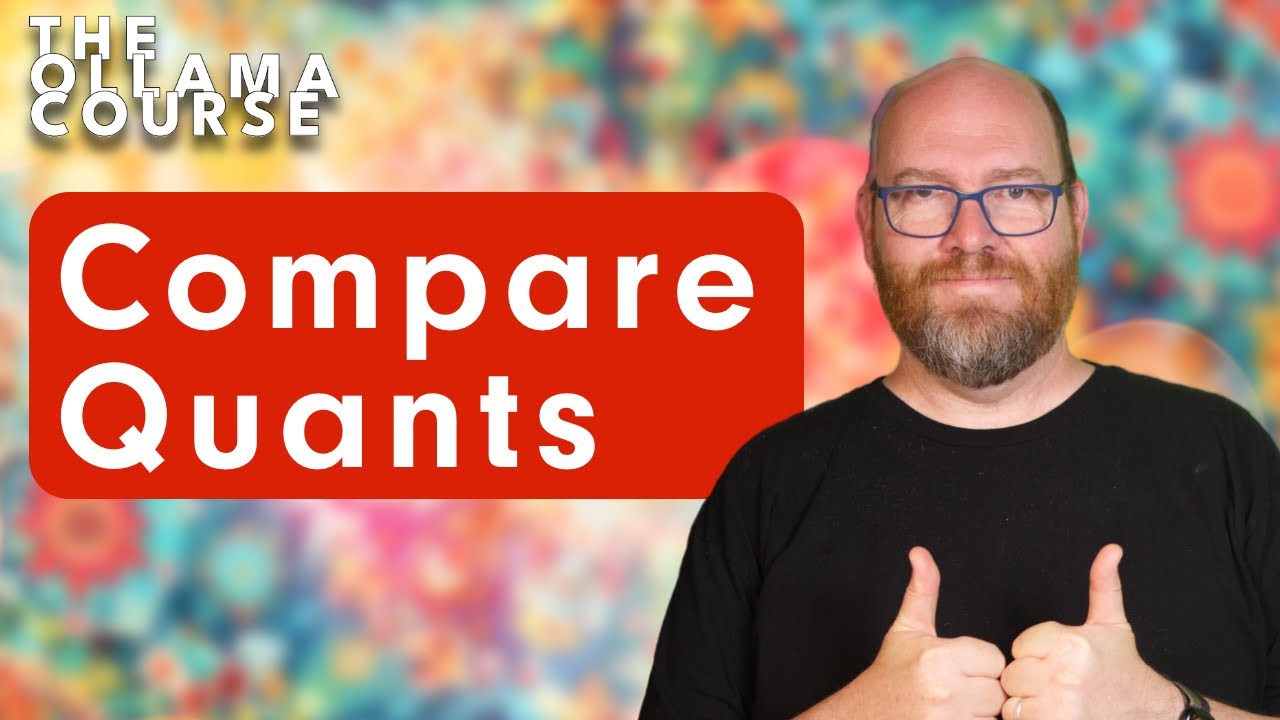The video compares the performance of different quantization levels of the Llama 3.1 model on the Ollama platform, highlighting that while lower quantization levels like two-bit and four-bit are faster, they may struggle with complex reasoning tasks compared to the 16-bit model. The presenter encourages users to experiment with various quantizations to find the best fit for their needs, emphasizing the importance of understanding each model’s strengths and limitations.
In the video, the presenter discusses the performance differences between various quantization levels of the Llama 3.1 model using the Ollama platform. The presenter poses a question about black holes to three different quantization variants: a two-bit quantization, a four-bit quantization, and a 16-bit floating-point variant. The results show that the two-bit model generated an answer in about two seconds, the four-bit model took three seconds, and the 16-bit model took ten seconds. Despite the time differences, the presenter notes that all answers were valid in their own ways, emphasizing that speed can be a significant factor when choosing a model for practical use.
The video also highlights the importance of testing models with multiple prompts to assess their performance accurately. The presenter created a program that allows users to input a prompt and receive responses from different quantization variants of the same model. This tool is designed to help users evaluate which quantization level works best for their specific needs. The presenter encourages viewers to experiment with various models and quantizations to find the most suitable option for their applications.
When the presenter changed the prompt to a logic problem, the results varied significantly among the quantization levels. The 16-bit model performed marginally better than the four-bit model, while the two-bit model struggled. This illustrates that while lower quantization levels can be efficient, they may not always provide the best performance for complex reasoning tasks. The presenter advises against using models for tasks they are not well-suited for, such as mathematical problems, and suggests sticking to questions that align with the models’ strengths.
The video also touches on the topic of function and tool calling within the Ollama framework. The presenter explains that there are two procedures for tool calling: an older method and a newer one, with the latter requiring specific schemas and fine-tuned models. The presenter notes that the success rates for tool calling can vary, often requiring higher parameter models for consistent results. The discussion emphasizes the need for users to understand the capabilities and limitations of different quantization levels when implementing function calling in their applications.
In conclusion, the presenter encourages viewers to ask their own questions to the models and determine which quantization level yields the best results for their specific use cases. The key takeaway is that users should aim to use the smallest parameter size and quantization that still provides satisfactory performance, as waiting for marginally better answers may not be practical. The video serves as a guide for effectively utilizing the Ollama platform and emphasizes the importance of keeping models updated for optimal performance.
You can find the code for this video at videoprojects/2024-08-20-quant-tester at main · technovangelist/videoprojects · GitHub
Be sure to sign up to my monthly newsletter at Subscribe to The Technovangelist
I have a Patreon at https://patreon.com/technovangelist
You can find the Technovangelist discord at: Technovangelist
The Ollama discord is at Ollama
